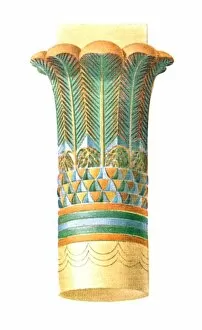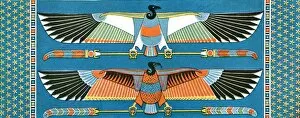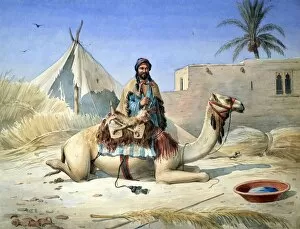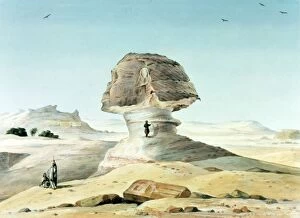Prisse Collection
"Exploring the Rich Heritage of Prisse: A Glimpse into Luxor, Egypt (1928)" Step back in time and immerse yourself in the captivating world of Prisse
All Professionally Made to Order for Quick Shipping
"Exploring the Rich Heritage of Prisse: A Glimpse into Luxor, Egypt (1928)" Step back in time and immerse yourself in the captivating world of Prisse, as we embark on a journey through Luxor, Egypt. In this column from 1928, created by an unknown artist, we are transported to an era filled with awe-inspiring wonders. Our first stop takes us to the majestic Great Sphinx of Giza. Through delicate watercolor strokes, its enigmatic beauty is brought to life before our eyes. Moving forward, we encounter a native Abyssinian adorned with an animal-skin cape - a testament to the diverse cultures that thrived in ancient Egypt. Continuing our exploration, a breathtaking bust of a Bishareen woman captivates us with her Ethiopian grace. This Ptolemaic capital from Edfu reveals intricate details that showcase the artistic mastery prevalent during this period. As we venture deeper into history at Karnak and Thebes, columns and capitals stand tall as silent witnesses to past glory. Each one tells its own story - whether it be the Bouquet capital or the Ptolemaic-Roman capital from Philae - they all reflect different architectural styles that have shaped Egyptian civilization. Delving further into these treasures unearthed by Prisse's lens brings us face-to-face with remarkable ceiling paintings found within tombs. The detail-rich masterpiece in Aichesi's tomb leaves us spellbound while vulture ceiling decorations at Philae transport us closer to ancient beliefs and symbolism. In every stroke and brushstroke captured by Prisse's camera lens lies not only artistry but also reverence for Egypt's rich heritage. These images serve as portals connecting us to a time long gone yet preserved through their visual storytelling. Join us on this enchanting voyage through Luxor as we celebrate Prisse's dedication in preserving these invaluable glimpses into Egypt's past.



















